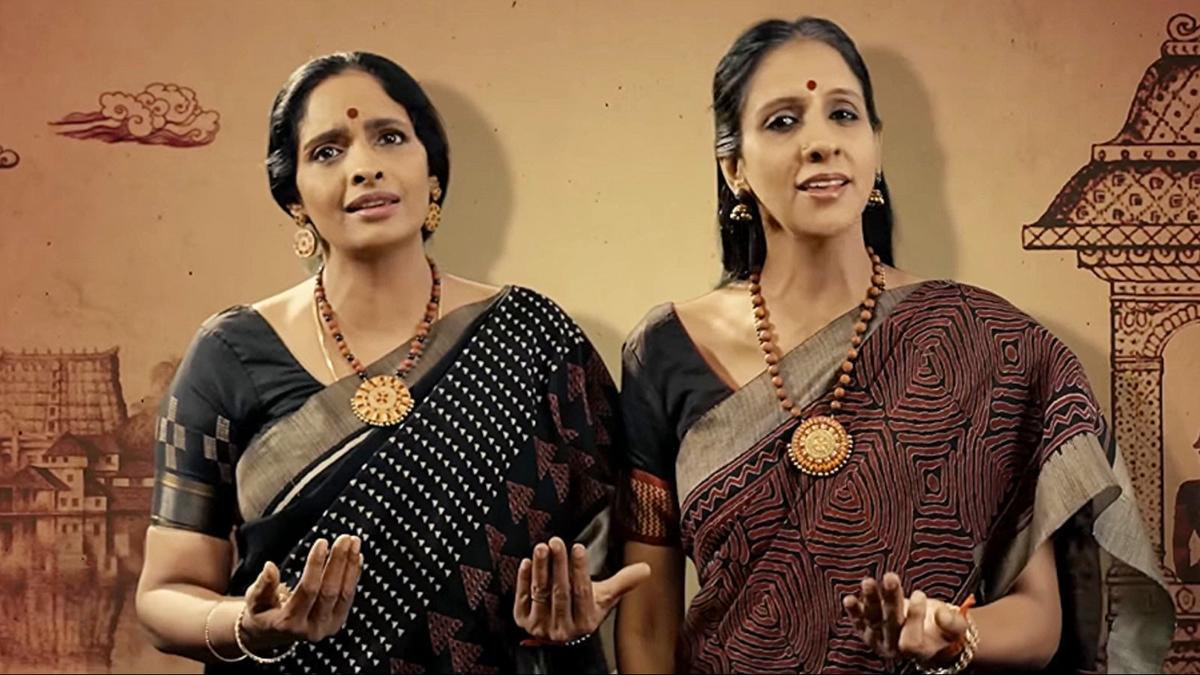As Swathi Thirunal’s musical legacy continues to be celebrated, composer-singer M Jayachandran has undertaken an ambitious project – ‘Swathi’s Manipravalam’, an 18-song series on the king-composer. padam (Love poems) in Manipravalam, a literary language combining Malayalam and Sanskrit.
The first song of the series, ‘Kuliramathi Vadane’, sung by Carnatic musicians Ranjani and Gayathri (raga), is released. “This is the culmination of a dream. In the early 90s, before I started working in films, one of my uncles gave me a book containing the works of Swati by Chidambara Wadhiyar. It was published in 1916 Padam, Thilana, Kirtan, Utsaprabandham Written by Adi Swathi Thirunal. i liked padamMany of whom we have never heard of. “I loved ‘Kuliramathi Vadane’ and wanted to tune it someday,” says Jayachandran.
As fate would have it, Chennai-based musician-turned-businessman SR Gopakumar had approached him with the same idea four years ago. “Gopan has been like my younger brother. His idea was to bring out 18 padam And he was ready to produce this project. When I agreed to do one, just to know how it goes padam He chose ‘Kulirmaathi Vadane’, which surprised me a lot. It was as if this song had been following me for so many years, waiting for me to become a better composer,” says Jayachandran, a multiple state film award-winning composer. A padam It is usually about longing for an absent beloved, with poetic metaphors about the lover’s beauty.
Gopakumar was the first to know padam Learning music from veteran K Omankutty in Thiruvananthapuram. “She was doing her research on Kathakali padam That time. Whenever I visited his house, I used to listen to these compositions and I loved his musicality and his use of manipravalam. When I moved to Chennai from Thiruvananthapuram, I was surprised to see that some artistes were singing Swathi’s compositions. That’s when I decided to work on popularizing his works,” recalls Gopkumar.
Once he found himself in a position to bring about such a project, he approached Jayachandran. “I felt that I needed a musician of his caliber to execute what I had in mind. He was extremely busy and I wasn’t sure whether he would take it or not. But when we sat down to discuss it, we were surprised that we had the same dream,” says Gopkumar.
It took time for Jayachandran to reach composition. “All we knew was that it was in Dhanyasi raga and Mishra Chapu taal. I did a lot of research and listened to compositions in raga. Since ragas evolve over the years, I created it in the style that would have existed during Swati’s era,” says Jayachandran.
M Jayachandran with Ranjani-Gayatri duo during the recording of the song. Photo Credit: Special Arrangement
The composer says that the Ranjani-Gayatri duo was his first choice for the performance. “I have been a big fan of his singing. Since the erstwhile kingdom of Travancore was close to Tamil Nadu, the language and culture was influenced by the region. I wanted the presentation to have a Tamil influence as well and that was another reason for choosing him,” says Jayachandran.
The initial plan was to use only traditional instruments like flute, veena and mridangam. He brought in stalwarts like Rajesh Vaidya (veena), Balasai (flute) and Ganapathy (mridangam). “But after I finished recording I felt something was wrong. Then I decided to add harmonies to it and brought in the Chennai Strings Orchestra. Harmonizing a traditional, complex raga like Dhanyasi is a rare endeavor in the Indian music scene,” he says.
Gopakumar mentions that he wanted it to have an acoustic feel and Jayachandran kept this in mind. “We had the same vision and objectives. The artists gave their all to refine the composition as this was like no other commercial venture for them.
Reflecting on the work, Ranjani and Gayathri found that they had faith in Jayachandran. “We respect him for the deep and authentic way he has understood and learned Carnatic music. He has also left his mark in the world of film music by composing many popular compositions,” says Gayatri. Ranjani adds, “His vision was to blend traditional instruments with strings. The way he has handled the instruments has heightened the emotional landscape of the composition. It has a perfect blend of orchestration, traditional accompaniment and classical singing. This is perhaps the first time that a Karnataka composition or padam This is how it is being presented.”
Both say that the recording session was not easy. “He is a perfectionist. Everything should be as he wanted – pronunciation, Musicmelody, brought…It is difficult to achieve spontaneity and perfection in the studio. But the magic was created because he knew what he wanted and he got it from us,” says Gayatri.

(From left) Rajesh Kadamba, M Jayachandran and SR Gopakumar. Photo Credit: Special Arrangement
The video’s director Rajesh Kadamba says that the project was originally conceived as a work of fiction. “But it was not feasible due to the busy schedules of the artistes. Everything you see in the video are shots we took at the time of recording and some were shot with the Chroma Green matte set up. It was important that the visuals not overpower the music. We also had to create a feeling of the era in which Swati lived. This was done through photographs of Tholpavakoothu in the background,” explains Rajesh. Shot by Vipin Chandran, the video also features classical dancer Sumasandhya.
“As a musician this experiment makes me happy and satisfied. “It’s like a cultural revival of musical heritage,” says Jayachandran, who has completed three decades as a musician.
‘Swathij Manipravalam’ is streaming on YouTube.
published – December 03, 2024 03:13 PM IST
